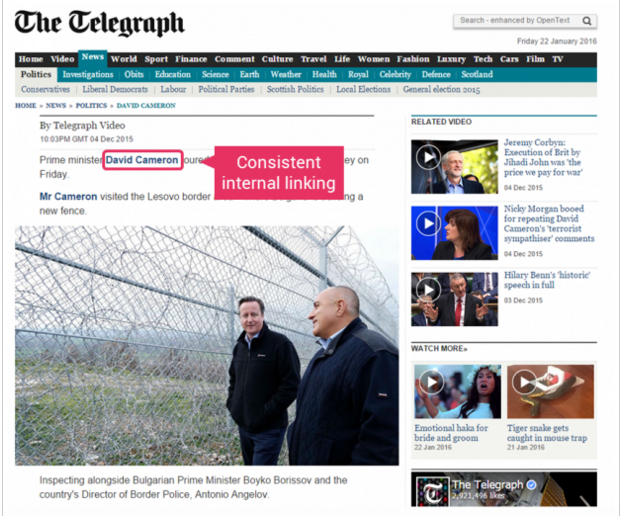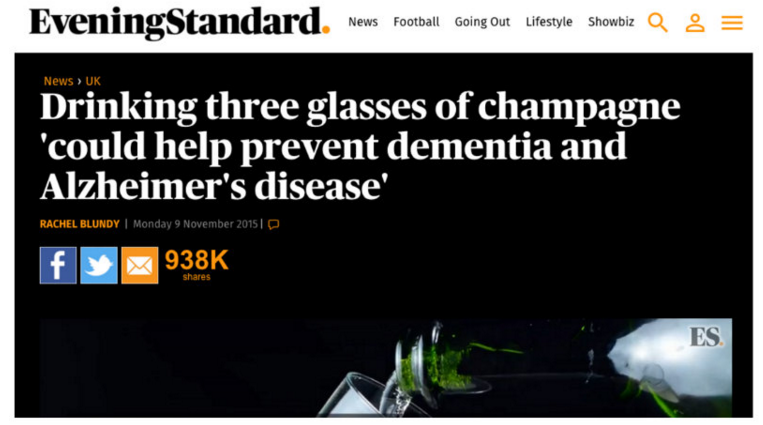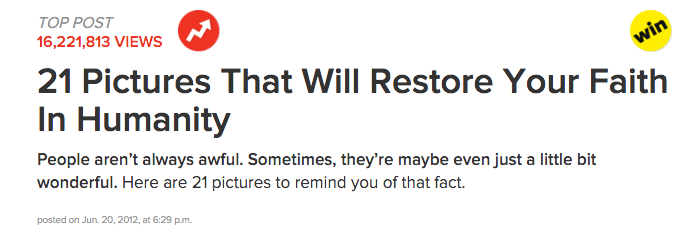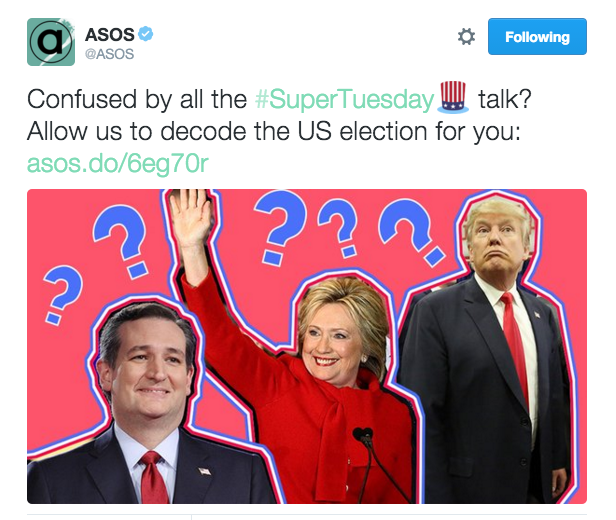The Internet is loaded with content, which means you face a huge amount of competition each and every time you upload a fresh item. So, how do you make sure yours is the one that attracts the eye of the reader?
These days anyone can write but as writers who are serious about digital content, we want to keep growing and challenging ourselves. We want to develop what we are writing about and how we are writing about it - which is great, but not if this is done at the expense of basic writing techniques. So, let’s take it back to basics now, because the basics are so important but too often overlooked. Get these wrong and you will limit your chances of creating successful and in demand content.
When you are ready to transfer an idea from your head into words on a page, follow these 10 simple steps to guarantee that incredible piece of copy you are about to write won’t sit in a forgotten part of the Internet, merely collecting web dust.
- A simple comma can change a sentence dramatically
Let’s eat, Grandma!
Let’s eat Grandma!
This may seem like an obvious one because, of course, our writing should always be grammatically correct and without spelling errors. But we're only human and we all make mistakes. This is why it is so important to check, double check and then get someone else to check your work.
The words themselves may be perfect but, constant spelling mistakes and misuse of grammar will spoil even the most hard-hitting of articles.
We aren't machines, and even the most experienced writer can make mistakes. Take this, for example. I write every single day, but with this article coming in at over 3,000 words it is very unlikely, if I posted it myself, that it would be error free. When you have read your work over and over again, you start to scan and mistakes can easily be missed. That's why this has been looked over by several fresh pairs of eyes.
Perhaps you always struggle over whether you should be using affect or effect, or question when to use an apostrophe? Then take a look at this Guardian Style Guide, which should be able to help!
Top Tip: Save the slang for your Facebook Status. You may want to appear 'cool' by using abbreviations and slang; depending on the topic this is fine in small doses, but constantly using it throughout your article is extremely off putting for the reader – and can be seen simply as a spelling mistake.
- Your headline should sum up your article
Image via Pinterest
Your headline is perhaps the most important part of the entire article, because the majority of people will use this to decide whether to read on. On average, eight out of ten people will read your headline copy, but only two out of ten will read the rest.
It needs to be attention grabbing enough to make them look in the first place and then intriguing enough to make them want to read the post to find out more. Remember, your headline will often appear in isolation on social media, for example, so it is very important that it is descriptive enough that the reader knows what to expect, and it definitely should not be misleading.
Take a look at this post by Zazzle's Content Manager Kevin Hughes for some tips on how to nail the perfect headline every time.
Top Tip: Kevin says: “Creating curiosity with a headline guarantees further investigation. If not searching for specific information, browsers are mooching around, looking for something worth reading.”
- A picture speaks a thousand words
Unfortunately, there's a good chance that 1,000-word feature that you worked so hard to get perfect won't be read, simply because some people just want to look at the images.
Perhaps you aren't even reading these words now because you've already understood from the heading that this section is about the use of images, so have scrolled down to look at said images and quickly ignored the accompanying words. An image does in fact speak a thousand words.
The right picture can actually tell you a lot more than words can, which is why it is so important to use the right one. When it comes to taking the perfect photo to accompany your content it must capture the reader's attention and almost begin to tell the story before they even start to read the words - leaving just enough to the imagination to spark interest and encourage them to read on.
Image via The Evening Standard
This powerful and haunting image was named World Press Photo of the Year 2015. With no words behind it, it still portrays the harsh reality for the refugees fleeing Syria and touches the hearts of those who see it.
That said the imagery you use will depend a lot on the type of piece you are writing. Sometimes the more pictures, the better. If you look at Buzzfeed's lighter hearted listicles, they intercept each point with a fun gif or image, which is far more attractive to the reader than a chunky looking piece of text.
An impactful image also means that your piece is more likely to be shared on social media. A study found that on Twitter photo tweets are 94% more likely to be shared than text-based ones.
Obviously using a photo you have taken yourself is advisable, but when this is not possible we often turn to Shutterstock. For more natural photos take a look at www.unsplash.com for stunning high-resolution images that can be used royalty free.
Top Tip: Hannah Doyle, Celebrity and Lifestyle Journalist: “IT’S ALL ABOUT THE IMAGES. Clean, fresh and original images are a really important part of good content, so it’s worth investing in a camera. Use natural light if you can and take the time to compose a nice shot, making sure it’s not too cluttered or busy. For inspiration, pick up a digital photography book or look to relevant Instagram posts. Finally, play around with editing tools before you use your shot. I use Afterlight for phone snaps and PicMonkey on my computer.”
- Your first paragraph should tell your story
Once you have enticed the reader into the main body of your content via the headline and images, you have your first paragraph to get them hooked.
Use your first few words to set the scene and tell the reader the main point of the piece, but like the headline, give away just enough information to make them hungry for more.
The Telegraph started their piece about the woman who hijacked the ferry with: "A woman high on drink and drugs who stole a passenger ferry and crashed into boats shouting, ''I'm Jack Sparrow'' has been jailed." This takes the headline one step further, by informing us:
- She was high on both drink and drugs
- She crashed the ferry into boats
- She has since been jailed
But while it sets the scene, it also leaves us with questions, meaning we want to read on and find out more.
Top Tip: Jack Simpson writes on Econsultancy: “The way people consume online content is different to how they would read a newspaper or novel. People are generally searching for the answer to a question. They’ve likely found your article via a search engine and they want to find the relevant information as quickly and easily as possible. The main point of your article should feature in the first two or three paragraphs. You can then expand throughout the rest of the article, but people should be able to get the general gist of what you’re saying in those initial paragraphs.”
- Layout: breaking down the wall of text
When the reader clicks on your content it will take them a matter of seconds to decide whether to actually read it or not, based primarily on the layout. If the reader clicks through to see a block of text, which is going to be difficult to read, they will instantly click away.
The font you choose is really important – small font that is all bunched up together is going to give the reader a headache to read, so they won’t bother. Don’t try and be fancy with your fonts – choose one that is straight, plain and clear.
You also need to provide plenty of whitespace – this helps the reader to stay focused on the content and increases their comprehension by 20%. The best way to do this is by writing short paragraphs – which will receive 50% more of reader’s attention than long ones.
However, the typical online user only reads between 20% and 28% of copy - after this they scan the rest to see if there is anything of interest or importance. Therefore you need to make this is as easy to find as possible.
To do this you may want to include:
- Images
- Subheadings
- Quotes
- Bulleted and numbered lists.
- Bolding or hyperlinking text
Ultimately you want to break the content up so it is easy to read and digest.
Top Tip: Subheadings can be as helpful to you as the writer, as they are to the reader. Why – because they help you to separate the main points of your post and therefore ensure that your argument is well structured and your writing is clear and concise.
- Linking
A combination of hub pages for key topics and keywords with well-planned internal linking can be an extremely effective SEO strategy.
Image via searchenginewatch.com
The post the above image is taken from shows how the Daily Mail has implemented a strategy of linking across a range of keywords, already successfully used by The Telegraph. This has enabled the site to rank more consistently for a broad range of search terms and as a result has seen an increase in traffic.
I have provided two links to Search Engine Watch above - to enable you to get a better understanding of the importance of linking. Which leads on to the second point: external links. While this won't take the traffic to other areas of your own site, it will enable the reader to get a better understanding and receive further information based on the topic you are discussing.
Top Tip: Double check that you are sending your reader to the correct URL via your links. A previous colleague once linked to the Um Bongo advert on You Tube (which was very different to what she should have linked to) – leaving her slightly red faced when she later realised her mistake.
- Who, what, where, when, why, how?
Going back to The Telegraph piece on the female Jack Sparrow, following on from the headline and opening paragraph, the piece went on to say:
"Reckless Alison Whelan, 51, was on a two-day bender when she climbed onto the moored 100-seater Dart Princess in Dartmouth, Devon. Whelan was so drunk on Lambrini she dialled 999 and officers raced to the scene but she then unmoored the 45ft vessel and started drifting away."
Who: 51 year old Alison Whelan
What: Climbed onto the 45ft 100-seater vessel and it started drifting away
Where: Dartmouth, Devon
When: While on a two-day bender
Why: She was drunk on Lambrini
How: She unmoored it
Less than 100 words into the piece, we have been provided with answers to our key questions, but we still have further questions which is why we will keep reading until the end of the piece.
What you don't want is for your reader to get to the end of the piece and have gaps in their information or, even worse, have got nothing from your post at all.
Top Tip: While it is incredibly important that your content provides answers – it is just as important to ensure that these are 100% accurate. Readers will lose all trust and respect for you if your content provides inaccurate or misleading information.
- Provide a positive reading experience
A positive reading experience comes from ensuring that your content is both up-to-date and original as well as regular. If you write original content, search engines will help your site get more exposure. This should be based on what is trending and what people currently want to read – but have a unique spin so that people choose to read yours over any other.
Again use Google Trends as well as Facebook and Twitter trends to see what people are talking about right now.
The best content is short and to the point. That isn’t to say you shouldn’t write a longer piece if you need to. Some topics can be explained in a few hundred words, others need a few thousand. Just ensure you eliminate the fluff!
Image via Buzzsumo
What!? Quick! Grab me a glass of champagne and then I will read on and share this to all my friends who also love a cheeky glass of bubbles!
This article was the most shared content on the Evening Standard in 2015 – probably because it not only provides us with a piece of information we didn’t know, but for champagne lovers it is also very welcome news. Plus, we are intrigued to read on because, how? How is this possible?
So what do you need to be writing about to ensure your content is well received and therefore shared? These 14 things according to Buzzsumo:
- Surprise people (facts and images)
- Leverage a trend
- Inspire people
- Create a stunning picture list post
- Exploit cute animals and babies
- Be funny
- Be controversial
- Quiz people
- Provide warnings
- Tell them the secrets to success
- Health, diet and fitness tips
- Secrets of love and dating
- Share the secrets to a long life
- Share a heart warming story
Buzzfeed are a shining example of content that provides a positive reading experience, particularly when it comes to their listicles, which have grown in popularity immensely over the last few years due to the fact they are both shareable and relatable.
How many times have you received a Whatsapp or e-mail from a friend or colleague with a link to a Buzzfeed post? Or shared it on your friends' Facebook wall because 'this is so us!' Or read a piece that is so relatable, you think, 'this person knows me so well, this could have been written for me'. Take their post '11 things people with anxiety want you to know' – as you nod your way through it - it also enables you to feel less alone in the knowledge that there are others who feel exactly the same as you.
This is Buzzfeed’s most viral post of all time. Why? Because in a world where content brings us the awful things that are happening all over the world, it provides an incredibly positive reading experience, in every sense of the word. You can read the full article here.
Top Tip: Tom Bourlet, Senior Digital Marketing Executive and Blogger: “One of the biggest learning curves for me was breaking down an article into segments, almost like a story. I read a lot of articles which have some great points, but they don’t know how to finish and it regularly doesn’t answer the question provoked in the article.”
- Write for your audience
Not every person in the world is going to be interested in reading your content, as good as it is. This is why you need to understand the key demographics you are targeting and produce content for them specifically.
Your tone will depend wholly on your audience; sometimes it is appropriate and expected for you to be funny and witty, however in certain publications and topics this would be highly inappropriate, when the tone is expected to be far more serious. Some audiences are looking to be informed and to learn something from the piece, while others are looking for a lighter read that will simply give them amusement.
Take the long awaited Oscar win for Leonardo DiCaprio, for example:
The Guardian's headline reads: Leonardo DiCaprio leads political charge at 2016 Oscars.
While one of Buzzfeed’s many headlines on the subject read: Leonardo DiCaprio Gave The Middle Finger During The Oscars And You Didn’t Even Notice.
They are both covering the exact same moment from the Oscars, but they put their own spin on it with angles that they know will appeal to their readership.
Top Tip: Neil Patel writes on Content Marketing Institute: “Knowing your audience is the starting point for any successful content marketing initiative.
You need to 1) identify who you are targeting with your content, and 2) create content that will resonate with them.
If you don’t do this, your content won’t get read, won’t get shared, and nobody will even care.”
- It's what you do after finishing writing that really matters!
Your content may be finished and published on the internet, but your job is far from over, because it's what happens after you have finished writing that will really determine its level of success.
Your article could be the best piece of writing ever produced in the history of content! But, if you don’t share it properly it will get lost among all the other content and no one will ever be able to appreciate it. And this doesn’t mean sharing just the title and link to your social media pages.
You need to be sharing it to the right people at the right time and with the right hashtags. You also want to share this more than once, but not the exact same message and without becoming a spammer! This could include:
- The title and link
- An engaging question to encourage a conversation
- A fact or figure included in your post
- An interesting quote from your piece
- A teaser message to grab attention
Get this right and half the job will be done for you as it is shared, therefore allowing it to reach an even wider audience as the reader promotes it for you.
Let's take ASOS as an example. Ultimately their goal is to sell the clothes, shoes and accessories on their website. They are aimed at, in their own words, 'Twenty-something fashion lovers everywhere.' But what they do – and they do it really well – is content and social media.
They are current and up to date – they obviously talk fashion, but they also share what is trending right now for their demographic, from celebrity gossip to more newsworthy pieces such as the Calais Migrant Crisis.
One of their most recent posts is all about decoding the US election – not an article you would expect to see on a fashion site. However, what they have done is taken an important and trending, but also confusing, topic and broken it down into terms that their demographic can understand and therefore find more interesting.
Their tweet includes the hashtag ‘SuperTuesday’ – which will involve them in the overall conversation. Then they use the keywords ‘Confused’ and ‘Decode’ which will attract their reader who is perhaps feeling confused and would like the information to be decoded for them. Related stories at the end of the article include: ‘Imagine if Kanye West were actually President' – which takes you back to and cements their target demographic. Read the full article here.
This may not link back to or have any relevance to their clothing, but via their content they build interest and a following, which ultimately increase traffic and as a result sales.
Obviously this requires all the above to have been done – a poor piece of content isn’t going to get shared whether it is tweeted at the right time or not.
Lastly, don’t just leave these sitting on social media either – you need to monitor the results. The beauty of these platforms is that they are always offering us new ways to gain insight into the success of our posts. So use these analytics to discover what people are reading, when they are reading it, who is reading it and so on.
Top Tip: Marcus Jayne, Founder and Creative Director of The Chic Geek: “Have a sense of humour, this isn’t brain surgery, after all! Use hashtags on social media so people can find what you’ve said. Also include people or companies that are relevant.”
As you can see content is key, whatever your business, and there is far more to it than simply writing a few words down on to a page. But follow these steps and you will reach the top in no time.
To Take Away:
If you take nothing more away from this post (and I hope you don’t or I haven’t done point No.7 very well) then take away this: at the heart of your writing, whatever the topic, you must always take it back to basics.
So, with that in mind, here are the 10 Content Commandments:
- Triple check your work to ensure that it is flawless – accuracy is vital
- Your headline must be eye-catching and descriptive without being misleading
- Images are just as important as the written content
- Set the scene at the very start of your content
- Your layout should ensure the text is easy to read and digest
- Provide your reader with extra information via links
- Content must be accurate and not leave the reader with questions
- Write original, up to date content based on what is trending
- Always keep your audience in mind when writing
- Promote your content or you have wasted your time writing it
Once you have got the basics you need to know how to effectively tell your audience a story – download this free eBook by Zazzle’s Senior Content Editor Andrew Brookes for some top tips on how you do this.
Sign up for our monthly newsletter and follow us on social media for the latest news.











 Proudly part of IPG Mediabrands
Proudly part of IPG Mediabrands